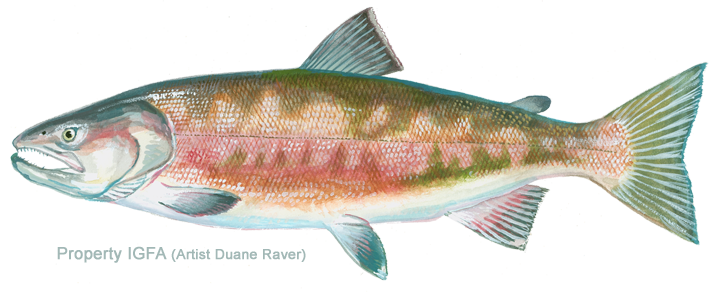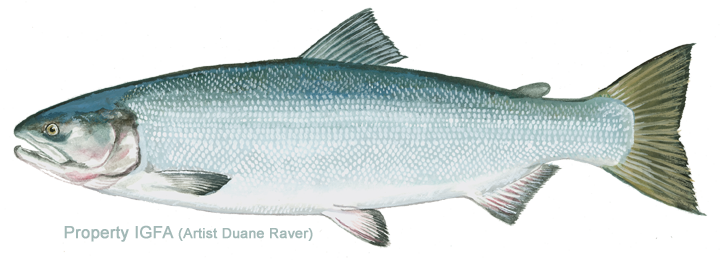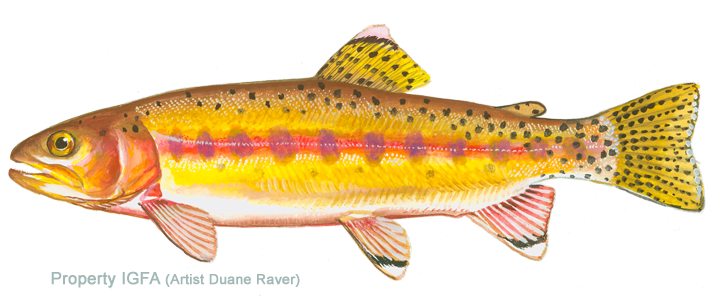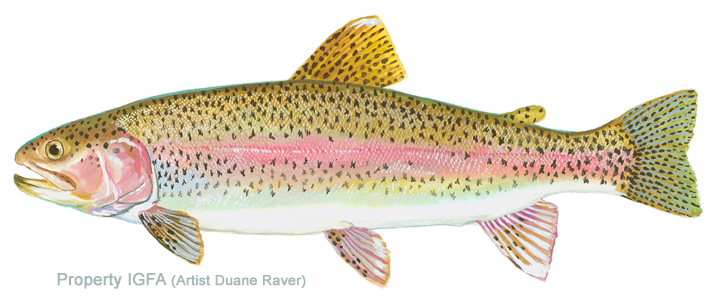Game Fish Identification Reference Guides
Salmon, pink
(Oncorhynchus gorbuscha)
(Oncorhynchus gorbuscha)
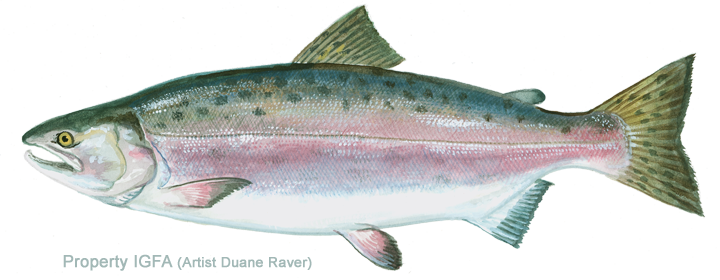
(Walbaum, 1792); SALMONIDAE FAMILY; also called humpback salmon, fall salmon
Endemic to the Pacific and Arctic oceans, Bering and Okhotsk seas, the Sea of Japan, and the rivers that flow into these waters. It occurs from Alaska south to the Sacramento River, California, throughout the Aleutian Islands, and northeast into the MacKenzie River, N.W.T., Canada. It has been introduced to Newfoundland and to the western coast of Lake Superior and is maintaining populations in these locations. Since the introduction into Newfoundland there have been sporadic reports of pink salmon in Labrador, Nova Scotia, and Quebec. It has spread through Lake Superior and is now spawning in tributaries of Lake Huron.
The smallest of the Pacific salmons, the usual size is 3 5 lb (1 2 kg). At sea they are silvery, as are all salmons. They can be identified by the large, black, oval shaped spots on both halves of the tail and large spots on the back and the adipose fin. At spawning time the male is easily recognized by its extremely humpbacked appearance. The male develops a kype at spawning time. The body of breeding males is pale red or “pink” on the sides with brown to olive green blotches.
The flesh is pink, rather than red or white, and although large numbers are caught commercially the pink salmon is regarded as less desirable than most other Pacific salmon.
The pink salmon and the chum salmon, Oncorhynchus keta, are often referred to as “autumn salmon” or “fall salmon” because of their late spawning runs
Endemic to the Pacific and Arctic oceans, Bering and Okhotsk seas, the Sea of Japan, and the rivers that flow into these waters. It occurs from Alaska south to the Sacramento River, California, throughout the Aleutian Islands, and northeast into the MacKenzie River, N.W.T., Canada. It has been introduced to Newfoundland and to the western coast of Lake Superior and is maintaining populations in these locations. Since the introduction into Newfoundland there have been sporadic reports of pink salmon in Labrador, Nova Scotia, and Quebec. It has spread through Lake Superior and is now spawning in tributaries of Lake Huron.
The smallest of the Pacific salmons, the usual size is 3 5 lb (1 2 kg). At sea they are silvery, as are all salmons. They can be identified by the large, black, oval shaped spots on both halves of the tail and large spots on the back and the adipose fin. At spawning time the male is easily recognized by its extremely humpbacked appearance. The male develops a kype at spawning time. The body of breeding males is pale red or “pink” on the sides with brown to olive green blotches.
The flesh is pink, rather than red or white, and although large numbers are caught commercially the pink salmon is regarded as less desirable than most other Pacific salmon.
The pink salmon and the chum salmon, Oncorhynchus keta, are often referred to as “autumn salmon” or “fall salmon” because of their late spawning runs















